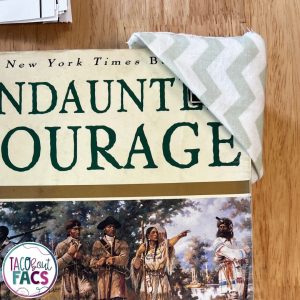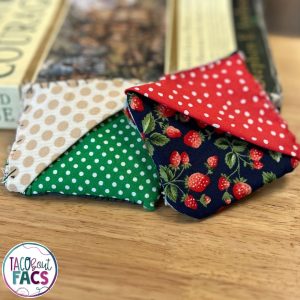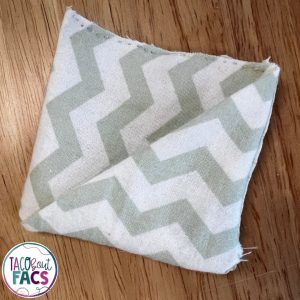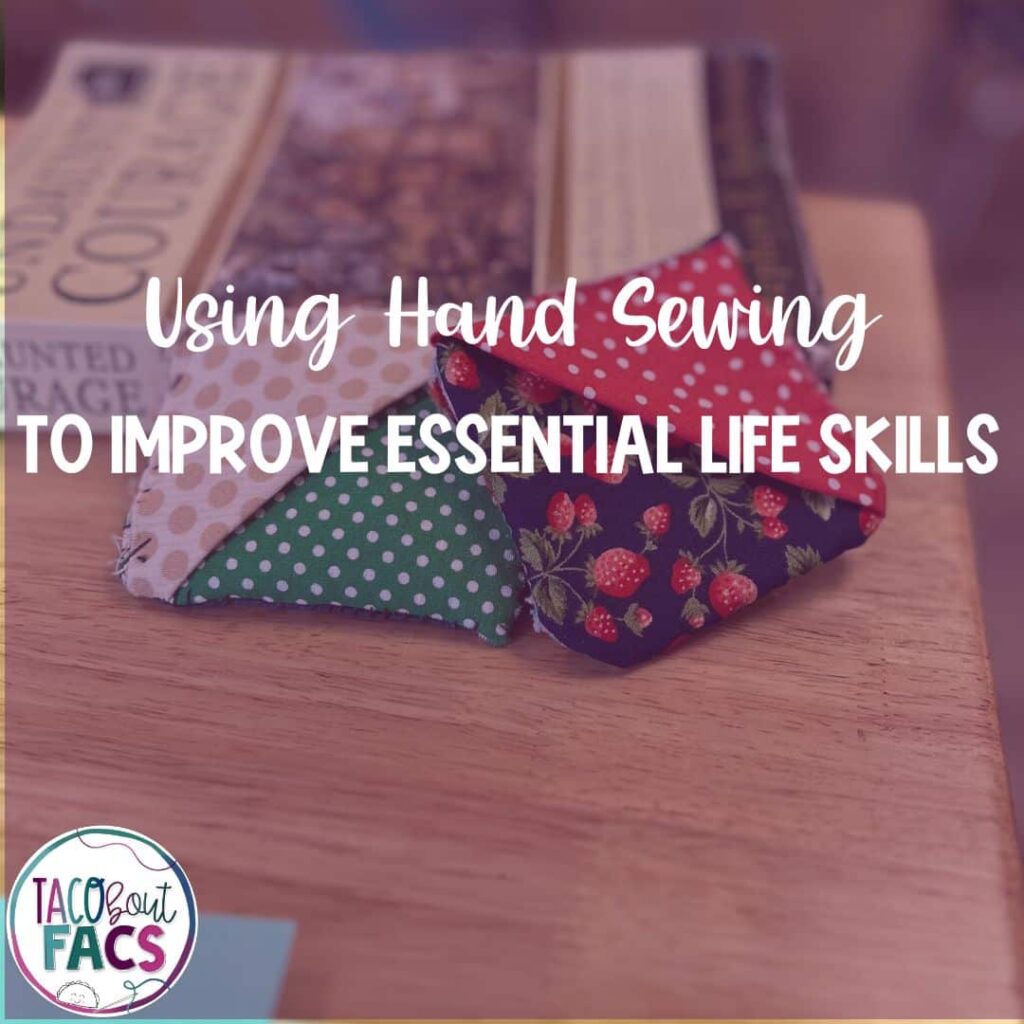Looking for a great way to challenge students, yet still provide an easy project to practice the basics of hand sewing?
I was in the same boat, wanting to find a project that was simple enough for intro level students, but also challenging enough to keep their attention. Introducing a corner bookmark.
My intro level course doesn’t use a sewing machine. I wanted to make sure students were learning the basics, because well, those basics are life skills! Students needed to learn how to thread a needle, tie a knot, and simple stitching techniques.

Another great part about this project is that it uses smaller pieces of fabric. If you are noticing you have scrap pieces, this project might work great for you.
Hand sewing challenges
I also like this project because it uses some essential skills that our students tend to be lacking, such as measuring and reading a tape measure or ruler.
There were a fair number of fabric squares that were measured in centimeters and with students starting the measurement at 1in.

We discuss and practice tight, tiny stitches before the project. I have examples posted about their stitching. We talk about making sure stitches are tight enough to hold, and yet, there are still quite a few that need a few more reminders and redos.
I also encourage students to make sure to choose cotton fabric. Even with all of these recommendations, there are always a few who decide to use satin or whatever other slinky fabric found in the fabric cabinet.
With the simplicity of this project, I do not mind having students start over when they do not measure or stitch correctly.
Benefits of hand sewing projects
The corner bookmark project is quickly becoming one of my favorites for the sewing projects for several reasons.

I taught elementary math for 11 years- I am fully confident these students learned to read a ruler, how to measure, and other similar tasks. I have also taught junior high long enough to know there must be a lapse in memory because those same students I once taught in elementary, seem to have forgotten those same tasks.
WIth that said, you might need to also remind your students to start measuring at zero and not the 1-inch mark.
This project involves following multi-step directions. I offer students a page with square templates to use. Students could use the paper square as a template to trace onto the fabric to ensure the squares are cut correctly.
Once again, I am blown away by the number of times I remind students to make sure all of the squares are cut to the exact size. Cutting can also be a challenge. My students have the option of nice, sharp sewing scissors or a rotary cutter and mat. It can still be a challenge.
Once the fabric squares are cut, this project uses an iron. There are a large number of students who haven’t used an iron before this project.
We do have to discuss how to use the iron. Plug it in to turn it on and unplug when finished. Some even needed a reminder to keep the iron upright and not flat on the ironing board when you’re finished and it is still plugged in and hot!
This project also uses fine motor skills to make sure they are using tight, tiny stitches. This can be a struggle for students. While I usually recommend they use the seam ripper to pull out stitches and try it again. I have some willing to try to turn the squares right-side-out and the project does not hold.
All of this to say, a large majority of students excel with this project and can easily finish this project in one-two class periods. Some even asking to make a second one.
One particular win was watching a boy who has verbalized his dislike for sewing, found every reason to stall the project, and managed to create a BEAUTIFUL bookmark worthy of a positive message home.
There are plenty of benefits and this is one project I would recommend adding to your line up.
Hand sewing versus sewing machine
Of course, this would be a simple and beautiful project for a sewing machine. Some of the bookmarks might look if we used a sewing machine.

However, I have realized so many students need the fine motor practice of threading a needle and learning to make proper stitches.
Not to mention, I would prefer to have such a large number of students learn the basics. About 1/3 of them go on to take FACS 2 in my building and those students learn to use a sewing machine.
Book Love by Penny Kittle
Our building has a 10 minute time dedicated to a building-wide reading initiative. It has been in place for almost 5 years. When I was an English teacher, we read Book Love by Penny Kittle and saw her speak in person. We found value in teachers and students spending a daily 10 minutes reading.
Our English teachers and librarians do a great job to ensure all students have a book. Discarded library books are donated to classrooms without a classroom library. My classroom always receives the cookbooks!
And now students have a book mark to keep and use for their daily reading books


